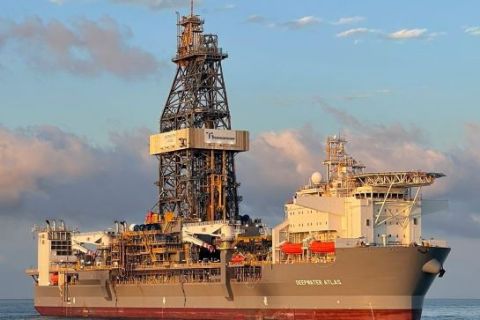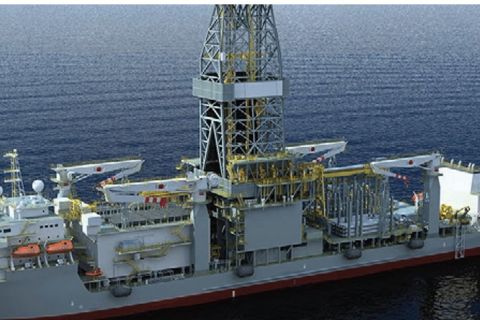The expiry of the June contract for Brent oil futures in Europe on April 30 will possibly be the most-watched event in oil markets for some time after the U.S. benchmark plummeted below zero for the first time in history last week.
The coronavirus pandemic has killed oil demand as over four billion people are in lockdown and last week, ahead of its contract expiry, U.S. WTI futures crashed deep into negative territory making it a liability for anyone holding it.
Analysts and investors have been wondering if the same will happen to Europe's Brent oil futures, but most agree that while there are no technical obstacles for the contract going the same way, it is hard to see why it would.
Brent is considered to be the international marker by the oil industry as it is linked to seaborne crude so has fewer storage limitations than WTI, which is settled against a major landlocked storage site in Oklahoma.
Brent is run by the Intercontinental Exchange (ICE) in Europe and other crudes are unofficially pegged to it, so there is more vested interest in keeping it stable.
Nevertheless, last week, ICE said it was ready to switch mathematical models, from Black-76 to Bachelier, to settle contracts at negative prices if needed.
How Do Brent Oil Futures Work?
- Brent oil futures are indirectly linked to the physical oil market, specifically the oil pumped out of the depths of the North Sea.
- The contract takes its name from the Brent oilfield off the Shetland Islands.
- It is a cash settled contract rather than a contract that is settled with a physical cargo of crude.
- If a market participant holds the contract to expiry, ICE uses the ICE Brent Index as the final cash settlement price.
- The Index is published by ICE on the day after expiry.
What IS the ICE Brent Index?
- The Index represents the average price of trading in the North Sea forward market, also known as the cash market, in the relevant delivery month on expiry day.
- The forward market consists of physical North Sea cargoes that trade before producers of those grades issue their monthly loading programm.
- The Index specifically follows five crude grades: Brent, Forties, Oseberg, Ekofisk and Troll.
- Forward trades of these cargoes are tracked and their prices published by commodity pricing agencies like S&P Global Platts and Argus Media.
- These grades are also used to set Dated Brent—a physical benchmark used to price most of the world's crude deals.
Brent Futures Close In on Physical Market
- The record disconnect between Brent futures and the physical market has narrowed considerably since mid-April, making a total collapse less likely.
- The spread between Dated Brent and Brent futures has narrowed to around $5/bbl from $8/bbl to $9/bbl.
- Dated Brent was more than $11/bbl cheaper than futures earlier in the month.
- “The arguments that Brent crude won’t go to negative prices are solid. Crude oil in the North Sea is produced directly onto ships which then can sail all around the world and utilize the last remaining pockets of free inventories," Bjarne Schieldrop, chief commodities analyst at SEB, said.
- "Brent is not immune to a negative price possibility...Overall, however, Brent should be more resilient," Louise Dickson, oil market analyst at consultancy Rystad Energy, said.
- "There are also fewer players with a vested interest in seeing Brent collapse—Saudi and Russian crudes are both unofficially pegged to Brent, for example. WTI is mostly affecting the U.S. interests, so if that collapses competing countries benefit."
Recommended Reading
Transocean Releases Fleet Status Report
2024-02-15 - Transocean’s total backlog for its fleet is approximately $9 billion.
Valaris Updates Fleet Status
2024-02-19 - The backlog of these contracts and extensions is valued at $1.2 billion.
Comstock Continues Wildcatting, Drops Two Legacy Haynesville Rigs
2024-02-15 - The operator is dropping two of five rigs in its legacy East Texas and northwestern Louisiana play and continuing two north of Houston.
Diamondback May Go Nuclear to Power Permian Basin Ops
2024-04-08 - Oklo Inc., a California fission power plant developer, on April 8 said it signed a letter of intent to collaborate with Diamondback Energy on implementation of nuclear energy for drilling operations in the Permian Basin.
TotalEnergies Starts Production at Akpo West Offshore Nigeria
2024-02-07 - Subsea tieback expected to add 14,000 bbl/d of condensate by mid-year, and up to 4 MMcm/d of gas by 2028.





